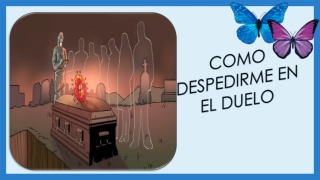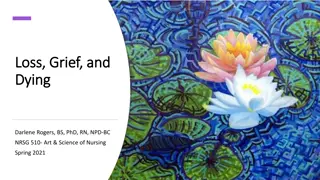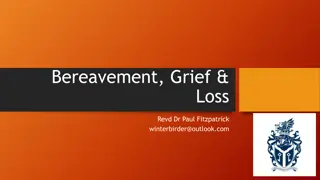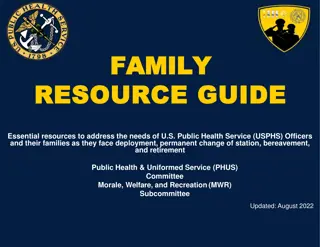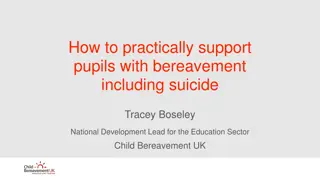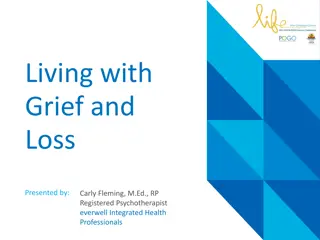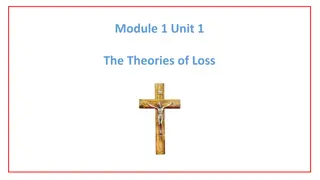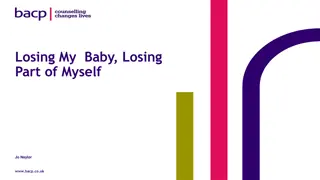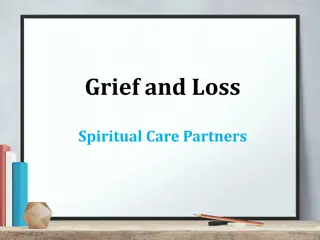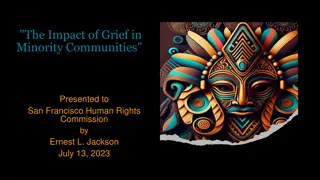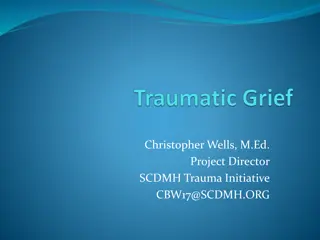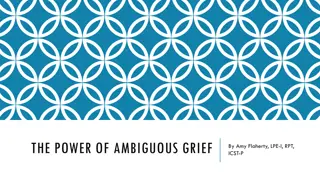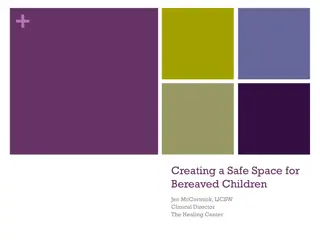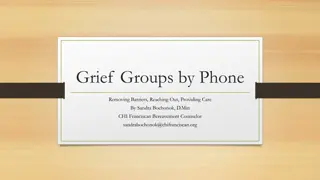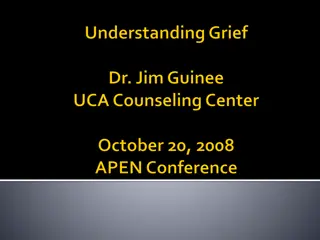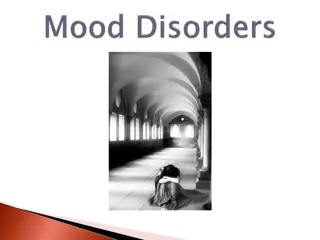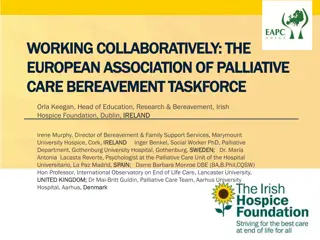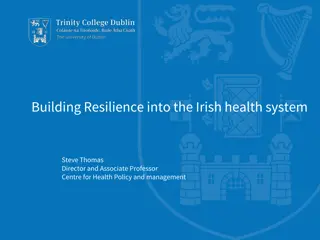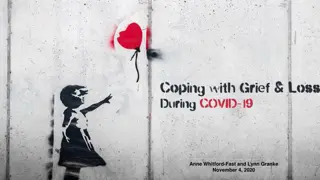Understanding Grief and Finding Resilience in Bereavement Groups
Bereavement groups led by Rabbi Shira Stern offer support for those experiencing grief, highlighting the unique language of grief and the importance of allowing individuals to navigate their emotions. The journey of grief is explored through images and verses, depicting the stages of denial, anger, bargaining, depression, and acceptance. These groups provide a safe space to process loss and nurture resilience in a community that understands the complexities of mourning.
Download Presentation

Please find below an Image/Link to download the presentation.
The content on the website is provided AS IS for your information and personal use only. It may not be sold, licensed, or shared on other websites without obtaining consent from the author. Download presentation by click this link. If you encounter any issues during the download, it is possible that the publisher has removed the file from their server.
E N D
Presentation Transcript
Bereavement Groups to Find our Resilience Rabbi Shira Stern, D.Min., BCC ravshira@gmail.com
Bereavement Groups We know that people react differently to common traumas, depending on their own experience of loss, their past coping mechanisms and their resources.
Bereavement Groups Grief has a special language Grief is lonely Grief creates a special community
Grief Because grief makes us look and feel vulnerable, many of us try to avoid it, at least in public. But it s hard to gauge when something will really hit you.
Grief Grief is not a straight line: You re awful, you get better, you re good. It s done.
Grief Helping someone find their resilience means allowing them to nurture their own grief
The Five Stages of Grief by Linda Pastan The night I lost you, someone pointed me towards the Five Stages of Grief. Go that way, they said, it s easy, like learning to climb stairs after amputation. And so I climbed. Denial was first. I sat down at breakfast, carefully setting the table for two. I passed you the toast you sat there. I passed you the paper you hid behind it.
Anger seemed more familiar. I burned the toast, snatched the paper and read the headlines myself. But they mentioned your departure and so I moved on to Bargaining. What could I exchange for you? The silence after storms? My typing fingers?
Before I could decide, Depression, lame puffing up, a poor relation, its suitcase tied together with string. In the suitcase were bandages for the eyes and bottles of sleep. I slid all the way down the stairs, feeling nothing.
And all the time Hope, flashed on and off in defective neon. Hope was a signpost pointing straight in the air. Hopewas my uncle s middle name, he died of it. After a year I am still climbing, though my feet slip on your stone face.
The tree line has long since disappeared; green is a color I have forgotten. But now I see what I am climbing towards: Acceptance, written in capital letter A : special headline: Acceptance. Its name is in lights. I struggle on, waving and shouting. Below, my whole life spreads its surf, all the landscape I ve ever known or dreamed of. Below a fish jumps: the pulse in your neck. Acceptance. I finally reach it. But something is wrong.
Grief is a circular staircase. I have lost you.
Bereavement Groups: Not time/loss/gender/age specific Some groups benefit from specific parameters (ie., those who have survived after a loved one died by suicide) Other groups benefit from on-going, non- specific criteria that do not impose any limits on participation
Benefits of this Safe Space Recent mourners can visualize how moving forward might look to them Veteran mourners can gauge how far they have come Mourners can tell their stories without fear of hurting their loved ones Mourners can remember incidents that are triggered by the stories of others Mourners can create a community, even when some members come and go and then return
Some Constants Loss is loss is loss Loss is isolating Loss is layered Wonderful memories Difficult memories Memories that evoke anger Memories that evoke feelings of abandonment Feelings of Loss can be mitigated by community
Creating Community Strong facilitator Allows for free discussion Limits monopolizing by any one participant Encourages the more hesitant to share their stories
Creating Community (2) Basic structure Intro and rules (absolute confidentiality, kindness) Quick check in Short opening meditation/song
Creating Community (3) Continuity of sessions No cancellations except weather holiday related restrictions Alternate Facilitator if necessary
Grief Lesson #1 Grief is complicated
Grief lesson #2 None, never, NO shoulds in Grieving
Grief Lesson #3 Grieving requires time, and every person moves through the grieving period at their own pace
Grief lesson #4 Sharing your narrative, in your own time and in your own way, helps propel the healing process. (it ain t easy. Nope. Not at all.)
Grief Lesson #5 It s never one and done, no matter how much we want it to be
Useful Tools Introducing Holiday-related themes: Yizkor on Yom Kippur, Pesach, Shavuot and Sukkot Blue Services Counting the Omer by writing down one separate memory for each of the 49 days Sharing one gift that their loved one taught them each night of Chanukah Sharing pictures when a new member enters the group
Healing Service within a Bereavement group Modified Healing Service on Yom Kippur with targeted messages: Healing ourselves after a death Insertion of El Malei and Kaddish Acknowledgement of: FirstYizkor First loss of parent First loss of partner/spouse/child/friend
Goal of Bereavement Groups Abraham Joshua Heschel teaches us that there are three ways to mourn; first to cry out, then to grow silent, and then to turn our sorrow into song." But the only wait to do that is to help people to articulate the narrative


